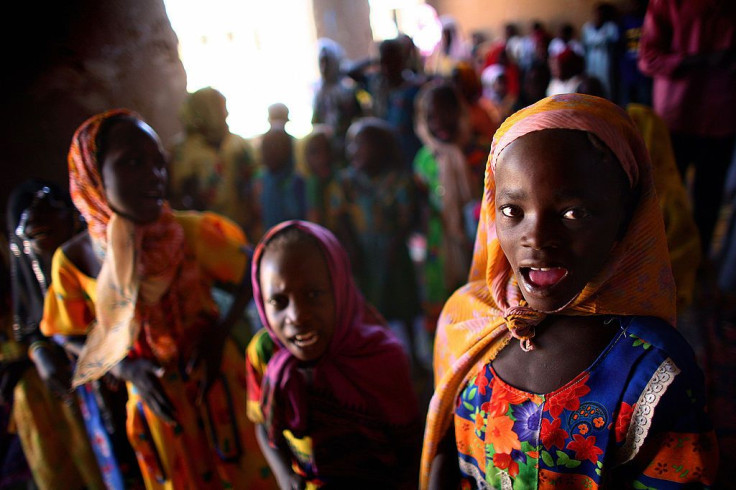Children In Low- And Middle-Income Countries Have Developmental Problems As Early As Age 3

In 2004, a Lancet series found that more than 200 million of the children brushed with malnutrition and poverty in low- and middle-income countries were cognitively and emotionally stunted before age 5. Early childhood is an especially formative time, and negative experiences then are linked to negative health outcomes later in life. But when researchers at the Harvard T.H. Chan School went to use this data to better quantify that effect for a new study published in PLOS Medicine, they found few other examples.
That’s not to say the well-being of children living in these countries has been ignored. Researchers have rightfully focused on physical health and survival rates, lead research Dana Charles McCoy told Medical Daily; and there is a robust body of work that studies children once they enter primary school. But as infant mortality rates and physical well-being improve, we need to look more toward how we can help children between birth and age 4 thrive, McCoy said. This is the time when they develop core skills critical to learning and to later physical and mental health.
To get the data they needed, McCoy and her team combined and analyzed the results of surveys UNICEF administered between 2005 and 2015 as part of the organization’s Multiple Indicator Cluster Survey program. Caregivers of almost 100,000 children living in 35 low- and middle-income countries answered questions having to do with their respective child’s cognitive and emotional characteristics, including comprehension of directions and the ability to work independently, avoid aggression, and get along with peers — core milestones of early childhood.
Nearly 36 percent of children failed to meet the basic cognitive and social-emotional milestones by the time they were 3. This deficit was greatest in Chad, Sierra Leone, and the Central African Republic; it was the lowest in Bosnia and Montenegro. Overall, nearly 38 percent of children in South Asia and 44 percent of children in Sub-Saharan Africa showed signs of developmental problems before their 5th birthday. Results also revealed that, in rural communities, it was more common for boys to be affected than girls.
Since prior research has shown 30 percent of children experience some form of stunting or delayed physical growth during early childhood, McCoy wasn’t too surprised at her findings. However, when she took into account the probability of physical delays, she projected the percentage of children at risk for early developmental problems was closer to 50 percent.
One contrasting finding showed that the majority of impoverished children were developing normally, and that one-third of children from wealthy families were struggling to reach developmental milestones. Other risk factors for poor scores include infectious disease and a low availability of quality health care and education, the researchers wrote.
“There’s a number of different causes of cognitive and socioemotional difficulties,” McCoy said, “and health-related illness is one aspect. We do know from prior animal studies that malnutrition can influence brain development and it can manifest through difficulty paying attention and [changes in] memory.”
For example, a rat study published in Nutritional Science found that early malnutrition can change the central nervous system, impairing working and recognition memory in the process. By 2012, studies pitted malnutrition in infants and children as a global health problem, something the Bill & Melinda Gates Foundation hoped to end by awarding the Washington University School of Medicine an $8.3 million grant to find new ways to diagnose, treat, and prevent the problem.
“One of the challenges in the work is that often the approaches are relatively segmented,” McCoy said, meaning health administrators aren’t necessarily in communication with those involved with the education systems. “The difficulty is getting all those parties to speak to one another.”
McCoy added that there’s pretty good evidence that shows that an integrated effort — one that combines health and broader domains of development — greatly helps disadvantaged children. But again, study participants are often older than 5 and the present study proves interventions need to begin much earlier. Part of the reason children as young as 3 are overlooked is that they’re still at home where they are cared for by parents. There the resources they need are decentralized and harder for parents to access, McCoy said.
This need for early intervention, particularly in Sub-Saharan Africa, can be seen in a 2012 report from UNESCO. Researchers found that two-thirds of the region’s urban population “live in slums where a lack of skills can confine young people to a life of subsistence work.” And in 2010, nine out of 10 young people were unemployed, with worse rates for those with less than a secondary education. These populations need alternative pathways to learn foundational and transferable skills, such as confidence and communication, the report concluded. It further estimated that “every $1 spent on a person’s education yields $10-15 in economic growth over that person’s working lifetime.”
“The best answer to the economic downturn and youth unemployment is to ensure that young people acquire the basic skills and relevant training they need to enter the world of work with confidence,” said Irina Bokova, the Director General of UNESCO, at the time the report was released.
Taken altogether, the research speaks to the level of challenges children and their families face across the world. McCoy believes conducting studies that target kids and provide support to young families is a critical next step for improving children’s lives as well as their communities and global well-being.
Source: McCoy DC, et al. Early Childhood Developmental Status In Low- And Middle-Income Countries: National, Regional, and Global Prevalence Estimates Using Predictive Modeling. PLOS Medicine. 2016.
Published by Medicaldaily.com



























